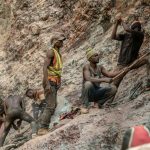Zimbabwe’s first-ever Mining and Energy Sunrise Summit has positioned the nation as an emerging powerhouse in global mineral supply chains. The event spotlighted Zimbabwe’s exceptional geological diversity and its commitment to sustainable, value-driven resource development — aligning the country firmly with the global shift toward critical minerals and clean energy.
Hosted in Harare, the summit brought together government leaders, private sector executives, investors, and development partners to chart a path toward unlocking Zimbabwe’s vast mineral wealth through modern policy, infrastructure reform, and inclusive growth.
Zimbabwe’s Mineral Advantage
Zimbabwe’s mineral portfolio places it among the world’s most strategically endowed nations. With the second-largest platinum group metals (PGM) reserves globally, alongside vast deposits of lithium, chrome, graphite, vanadium, gold, and copper, the country stands at the forefront of both traditional and emerging mineral markets.
Key Resources Driving Global Demand
- Platinum Group Metals: Critical for automotive catalysts and hydrogen fuel technologies
- Lithium: Essential for battery production and electric vehicles
- Chrome: Key to stainless steel manufacturing
- Graphite & Vanadium: Core materials for advanced battery storage systems
- Gold & Copper: Mainstays for industrial and energy infrastructure
This diversity gives Zimbabwe a natural hedge against market volatility, enabling balanced growth across industrial, energy, and technology sectors.
“Zimbabwe’s geology supports both legacy commodities and future-facing minerals — a rare advantage that underpins our ambition to become a global supplier of critical materials,” said Deputy Mines Minister Hon. Polite Kambamura.
Policy and Investment Reform Driving Growth
The government’s ongoing mining sector reforms are transforming Zimbabwe’s investment landscape. Streamlined permitting, transparent licensing, and enhanced investor protections are attracting renewed international confidence.
Key Reform Features
- Simplified Permitting: Reduced approval times for new projects
- Legal Clarity: Clear ownership structures and dispute resolution frameworks
- Community Inclusion: Mandated local development contributions
- Infrastructure Incentives: Tax benefits for regional development projects
These reforms, anchored in public–private partnerships, are designed to promote shared prosperity. They aim not only to attract capital but also to ensure mining delivers lasting social and economic value.
Beneficiation and Value Addition: Building Industrial Capacity
Zimbabwe’s beneficiation policy marks a major shift from raw mineral exports to domestic value creation. The government is encouraging investments in refining, smelting, and processing facilities to ensure that mineral wealth translates into jobs, skills, and industrial growth.
Beneficiation Focus Areas
- PGM Refining: Domestic production of refined platinum products
- Lithium Processing: Battery-grade lithium chemicals
- Chrome & Ferrochrome: Integrated supply for steel production
- Graphite Purification: Material for electric vehicle batteries
- Gold Fabrication: Jewellery and industrial applications
“Skills development and beneficiation are critical to ensuring that Zimbabwe’s mineral resources benefit all citizens,” said H.E. Bridgette Motsepe, Ambassador of Economic Development at the Pan-African Parliament.
Infrastructure: The Backbone of Growth
Infrastructure remains a central enabler for mining development. Summit discussions highlighted collaborative investment models to improve transportation networks, energy reliability, water systems, and digital connectivity.
Priority Infrastructure Areas
| Sector | Challenges | Focus Areas |
|---|---|---|
| Transport | Aging rail and roads | Rail modernization, logistics hubs |
| Energy | Power shortages | Grid stability, renewable integration |
| Water | Processing needs | Water treatment and reuse systems |
| ICT | Rural connectivity gaps | Broadband and data infrastructure |
Upgraded infrastructure will reduce logistics costs, improve export efficiency, and unlock previously inaccessible deposits.
Clean Energy Transition: A Demand Multiplier
As global industries transition to clean energy technologies, Zimbabwe’s critical minerals are in high demand. The nation’s lithium, graphite, vanadium, and platinum are indispensable for battery systems, fuel cells, and renewable energy infrastructure.
This alignment with the green economy positions Zimbabwe for sustained growth well into the coming decades, supported by long-term global policy mandates for electrification and carbon reduction.
Collaborative Partnerships and Skills Development
The Summit showcased multi-stakeholder collaboration models that bridge government, private sector, and community priorities. These frameworks ensure mining-led growth is both inclusive and sustainable.
Skills development emerged as a major focus, with new partnerships between industry, universities, and training institutions aimed at cultivating local expertise in mining engineering, environmental management, and processing technologies.
Building local capacity reduces dependence on expatriate skills while ensuring that value creation remains in-country.
Vision 2030: A Sustainable Mining Future
Zimbabwe’s Vision 2030 sets ambitious goals to transform the nation into a regional mining hub through:
- Increased PGM, lithium, and gold production
- Expansion of beneficiation capacity across commodities
- Technology-driven efficiency gains
- Environmentally responsible mining practices
With reforms underway and investor interest growing, Zimbabwe’s mining renaissance is rapidly gaining momentum — and the Mining and Energy Sunrise Summit marks a pivotal step toward realising this vision.















